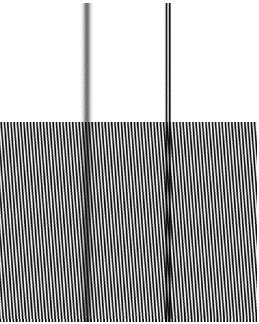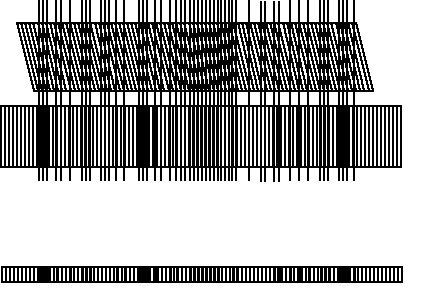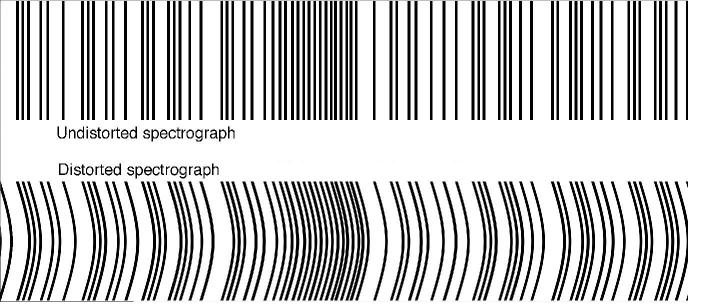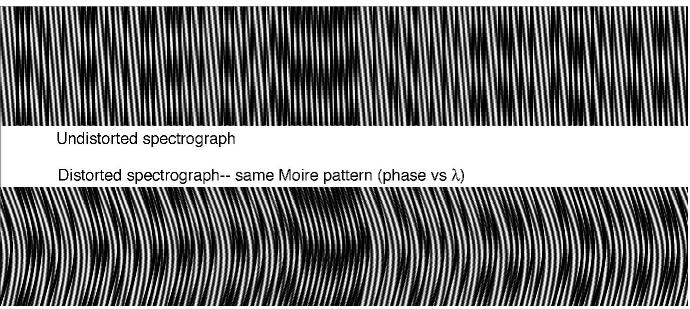1. Moire & Resolution Boosting
Resolution is classically defined as the ability to distinguish a doublet from a single line.
Wow factor: the moire pattern distinguishes the doublet from the singlet. Therefore the effective resolution has been increased!
Advantages: you can now increase the resolution of your spectrograph, even though you have a lousy grating or wide slits, or blurry lenses.
How'd they do that?: the mathematical process that creates moire patterns is called heterodyning. The math used to reverse the heterodyning is described in Refs. 5, 7, 8.
|





